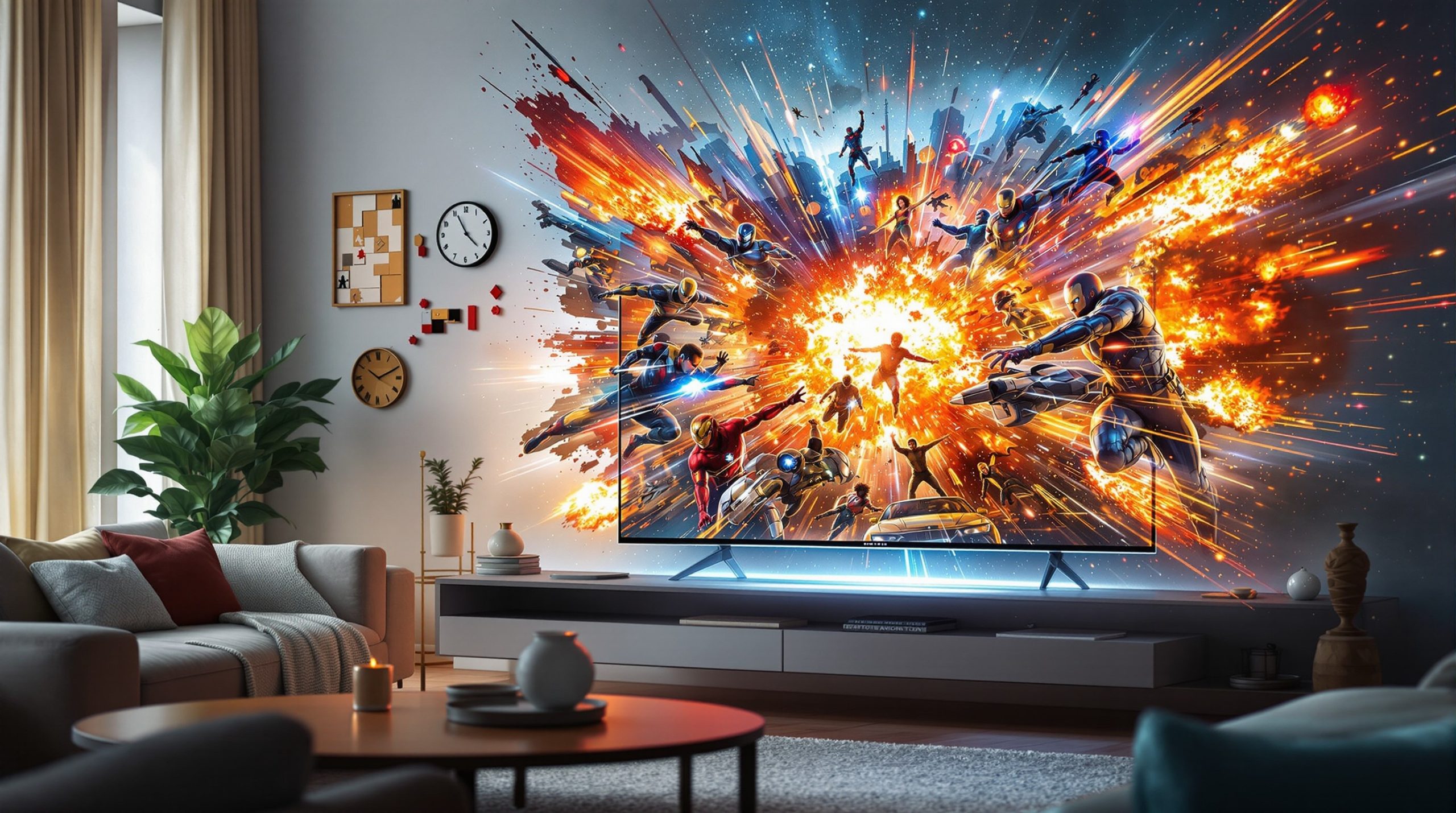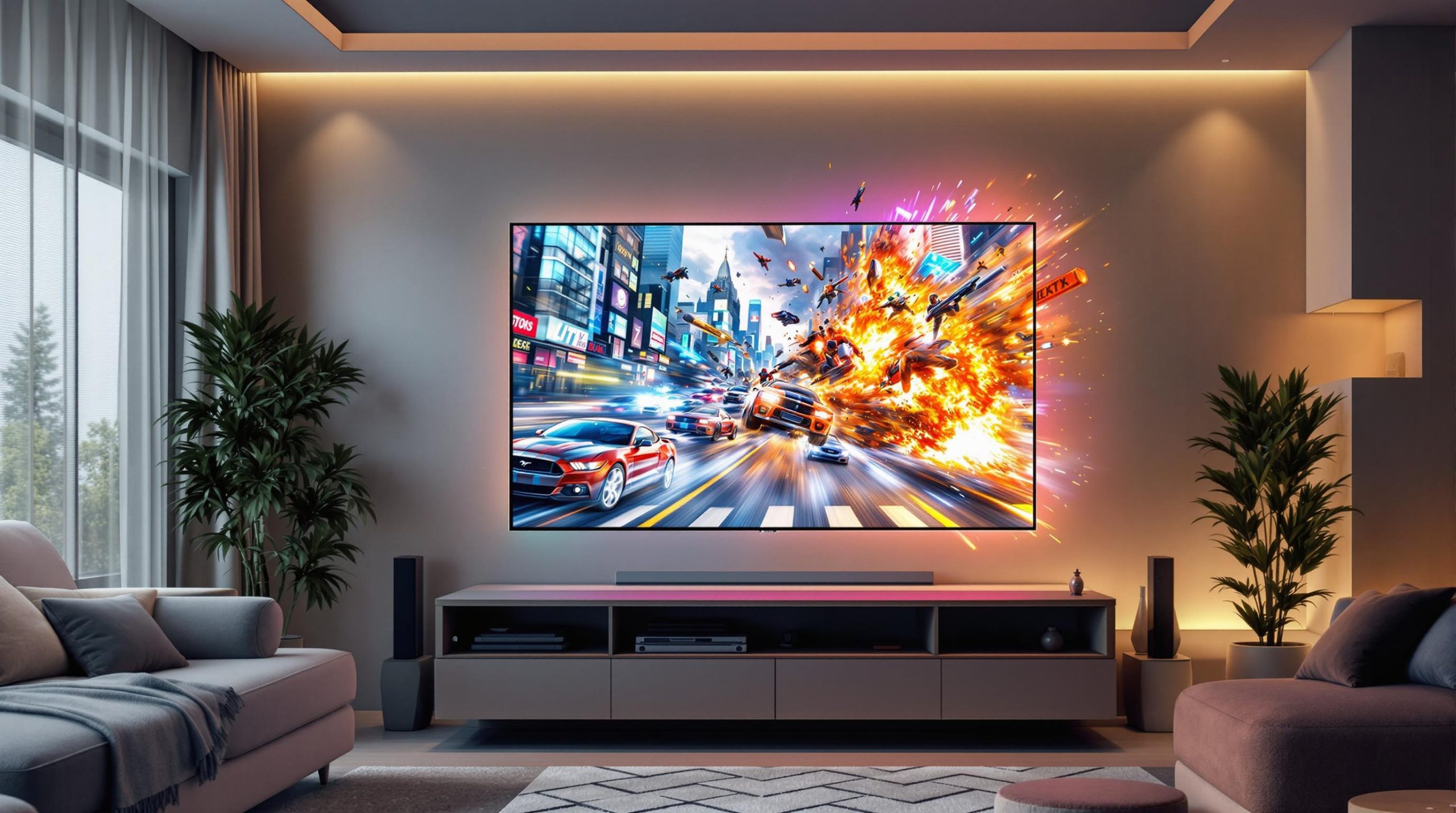3D Movies – The Next Generation Cinema
With 3D movies arriving on the scene, movie watching experience has enhanced many folds. One of the most important developments that made way for the popularity of these movies was the creation of tools or gadgets that could be used for individual 3D viewing.
This was followed by inventions, which enabled the development and inclusion of 3D projectors in cinemas. Movie studios have also developed 3D audio technology to complement 3D movie watching. While the 3D TVs are slowly becoming every household’s possession, 3D technology continues to evolve in the hands of competitive engineers and scientists all over the world.
Early History of 3D Films
British film maker William Friese-Greene introduced 3D to motion pictures during the late 1980s when he made an official request for a patent of 3D film processes. This early patent comprised of a system where two films were shown alongside each other on screen.
In this system, the viewer had to look into a stereoscope that converged the two images from the films. As this was a cumbersome process for 3D viewing, it could not be incorporated in large scale cinema screening.
After this, several engineers and scientists formulated unique methods of 3D viewing that were experimented with and used briefly in cinemas. The first reported commercial 3D film ‘The Power of Love’ was screened for the first time in September 1922.
The camera used to record the film was made by Robert F Elder and Harry K Fairall and it incorporated the use of red-green anaglyph with dual strip. This movie is the first known to have used dual strip and the first to have incorporated the use of anaglyph eyewear.
The next noteworthy introduction to 3D technology was Prizma color system in 1922 by William van Doren Kelley. He designed a camera of his own, shot 3D footage with it and had it premiered by Samuel Rothafel at Rivoli Theatre. This footage titled ‘Movies of the Future’ was part of his first Plasticon series, and was followed by ‘Through the Trees – Washington DC’, which was part of his second Plasticon series in 1923.
Also in 1922, William Cassidy and Laurens Hammond showcased the Teleview system that used one of the first alternate frame format for sequenced film projection.
In 1925 three 3D movies – ‘Luna-cy!’, ‘Ouch’ and ‘The Run-Away Taxi’ – were released, after which there was a lull in 3D movie production mainly owing to the Great Depression. In 1936, John Norling and Leventhal directed MGM’s series titled ‘Audioscopiks’ and in 1938, the ‘New Audioscopiks’. The former went on to win an Academy Award for the Best Short Subject Novelty for that year.
The 1932 introduction of Polaroid J Sheet gave rise to a new era in 3D film screening. Two early notable 3D films made using this were ‘In Tune with Tomorrow’ (1939) and ‘Magic Movies: Thrills For You’ (1940).
The first stereoscopic film in color was ‘Bwana Devil’, released in 1952 and it was followed by another 3D film ‘Man in the Dark’. ‘House of Wax’ by Warner Bros. was the first 3D movie to include stereophonic sound.
Walt Disney’s first 3D movie ‘Melody’ was released in 1953 following that of Universal-International’s first 3D release ‘It Came from Outer Space’ (also featuring stereophonic sound). Dimensional Pictures’ ‘Robot Monster’ was one of the most memorable 3D movies released at that time.
A few years following these releases, there was another lull in 3D movie production, but this was owing to the inconvenience caused by the cumbersome technology used in the projection of these movies. Also, the 3D technology used in these movies required movie watchers to adopt a particular position throughout the movie so that they get the best experience.
This however led to most people experiencing headaches that discouraged them from watching 3D films for a while. One of the noteworthy films that played a big role in bringing 3D films back to theatres was ‘Kiss Me Kate’, a musical from MGM. Other movies that were crucial in bringing back audience’s interest in 3D films were ‘Hondo’ (Warner Bros.) featuring John Wayne, ‘Money from Home’ (Paramount) featuring Dean Martin and ‘Miss Sadie Thompson’ (Columbia) featuring Rita Hayworth.
These movies were followed by a number of others like ‘The French Line’ and ‘Taza, Son of Cochise’ that were hugely successful. A few others were ‘Creature from the Black Lagoon’, ‘Cat Women of the Moon’ and ‘Dial M for Murder’. ‘The Mask’, ‘Friday the 13th Part III’, ‘Amityville 3-D’, ‘Wings of Courage’, ‘Jaws 3-D’ and ‘Alien Adventure’ were other popular 3D movies released towards the end of the 20th century.
3D Cinema – 2003 To 2010
James Cameron’s ‘Ghosts of the Abyss’ released in 2003 was the first IMAX 3D commercial film in full length. ‘Polar Express’, released in 2004 was the first IMAX 3D animated film in full length.
In 2005, Walt Disney’s ‘Chicken Little’ was released in digital 3D, while in 2006 ‘Ant Bully’ and ‘Open Season’ were released in analog 3D. Some of the 2008 3D films were ‘Bolt’, ‘Hannah Montana and Miley Cyrus: Best of Both Worlds Concert’ and ‘Journey to the Centre of the Earth’. Much talked about 3D films to release in 2009 were: ‘Avatar’, ‘Coraline’, ‘Monsters vs Aliens’, ‘The Final Destination’ and ‘Up’.
In 2010, there were three major 3D movies in theaters, namely ‘Clash of the Titans’, ‘Alice in Wonderland’ and ‘How to Train Your Dragon’. The first 3D stereoscopic movie to be released in the category of video on demand via cable broadcasting in the United States was ‘Scar3D’.
Some of the older movies converted into 3D movies on DVD include ‘Robot Monster’ (1953), ‘Cat Women of the Moon’ (1953), ‘Comin’ At Ya!’ (1961) and ‘Elvira: Mask’ (1961). A few others are: ‘The Bubble’ (1967), ‘Domo Arrigato’ (1973) and ‘Blonde Emmanuel’ (1976). Viewers have to use anaglyph 3D glasses with red-cyan or red-blue filters to get the best 3D experience from these movies.
3D Movies: The Next Generation Cinema (2010–2025)
The 2010s: The 3D Boom and Mainstream Adoption
After the massive success of Avatar in 2009, the early 2010s saw a surge in 3D movie production. Major studios released blockbusters in 3D, including Alice in Wonderland, How to Train Your Dragon, and Clash of the Titans in 2010. The trend continued with franchises like Harry Potter, Transformers, The Avengers, and Jurassic World embracing 3D, often using digital conversion techniques to add depth to films originally shot in 2D.
This period was marked by rapid technological advancements. Digital 3D projection systems and high-definition stereoscopic cameras allowed filmmakers to create more seamless and visually stunning 3D effects. The immersive experience of 3D, especially in action, adventure, and animated films, drew large audiences and justified premium ticket pricing, making 3D a lucrative business for studios and theaters alike. The use of CGI and visual effects reached new heights, with 3D technology showcasing these elements in spectacular detail, as seen in films like Gravity and Life of Pi.
Artistic and Commercial Impact
3D was not just a technical upgrade; it became an artistic tool. Directors like James Cameron and Ang Lee used 3D to enhance storytelling, creating a sense of depth and immersion that traditional 2D could not match. Animated studios such as Pixar and DreamWorks also embraced 3D, with films like Toy Story 3 and How to Train Your Dragon setting new standards for animated storytelling.
Commercially, 3D films often commanded higher ticket prices and contributed significantly to box office revenues, especially in international markets where 3D remained popular even as interest waned in some Western countries.

The Mid-2010s: Market Saturation and Backlash
By the mid-2010s, the novelty of 3D began to wear off for some audiences. While high-quality 3D films continued to perform well, many movies were converted to 3D in post-production with lackluster results, leading to criticism that 3D was being used as a marketing gimmick rather than an artistic choice. Complaints about dimmer images, uncomfortable glasses, and higher ticket prices became more common. As a result, some theaters reduced the number of 3D screenings, and studios became more selective about which films received the 3D treatment.
The Late 2010s and 2020s: Selective Use and Technological Evolution
Despite the decline in the number of 3D releases, the format remained important for certain genres and event films. Major blockbusters, especially in the science fiction, fantasy, and superhero genres, continued to use 3D to enhance spectacle. Films like Doctor Strange, Jurassic World: Fallen Kingdom, and The Lion King (2019) demonstrated that, when used thoughtfully, 3D could still deliver a memorable cinematic experience.
Technological advancements also continued. IMAX 3D and Dolby Cinema offered brighter, sharper, and more comfortable 3D experiences. Meanwhile, the rise of virtual reality (VR) and augmented reality (AR) introduced new forms of immersive storytelling, pushing the boundaries of what 3D technology could achieve both inside and outside the cinema.
3D at Home and Beyond
The dream of 3D TV in every home, which seemed possible in 2010, did not fully materialize. While 3D Blu-ray players and TVs were available for a few years, consumer interest faded due to the inconvenience of glasses and limited content. By the late 2010s, most manufacturers had discontinued 3D TV production. However, 3D content remained available through Blu-ray and streaming platforms for enthusiasts.
The Future: Quality Over Quantity
As of 2025, 3D movies are no longer the default for every blockbuster, but the format persists for select films where it genuinely enhances the experience. The focus has shifted to quality over quantity, with filmmakers and studios using 3D as a creative tool rather than a mandatory feature. The legacy of 3D cinema is evident in the continued evolution of immersive technologies, including VR and AR, which build on the foundation laid by decades of 3D innovation.
In summary:
From 2010 to 2025, 3D movies experienced a dramatic rise, a period of saturation and backlash, and a transition to a more selective, quality-driven approach. While no longer the dominant force it was in the early 2010s, 3D remains a valuable tool for filmmakers and a source of spectacle for audiences, especially in genres that benefit from immersive visuals. The story of 3D cinema is now intertwined with the broader evolution of immersive media, ensuring its influence will continue for years to come.
3D TV Requirements for Watching 3D Movies at Home
3D movie watching at home is currently enabled by 3D displays and eyewear that facilitate 3D viewing. Active 3D TV glasses with LCD screens operate wirelessly and connect with a 3D display or television screen by way of infrared sensors.
Another accessory necessary for 3D viewing at home is a Blu-ray disc player that conforms to Blu-ray Disc Association standards. Viewers using polarized glasses for viewing 3D films at home have to use a unique polarizing film over their television screens.
Read more about the History of 3D TV.

